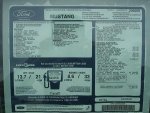... I know what the BTU is but haven't used it since I was in nappies - diapers in your parlance..........

An imperial ton is 2240 lbs. A tonne or metric tonne as it is sometimes called is 1,000kg so 2,205 pounds. Not often used.
But we are not very consistent. Go in a pub, order drinks. I get a pint of beer, my dear wife gets a 250ml glass of wine. A mish mash. I get 60 mpg fuel consumption from my car but I buy fuel by the litre. And pay for in in pounds sterling. Car engines are routinely rated in horsepower. Tyres (tires) are dimensioned in inches as a rule although I did have a Cologne built Ford that had "metric" tyres.
A right mish mash ...
A British Thermal Unit is the quantity of heat required to raise the temperature of one pound of water (454 grams) by one degree Fahrenheit. A BTU is close to one kiloJoule and it's an inexact definition, because the thermal capacity of water changes with changing temperature. I enjoy the irony of Americans using the British Thermal Unit, but not the British.
A calorie is a similar unit, the quantity of energy required to raise the temperature of one gram of water by one degree Fahrenheit. But when referring to the energy contained in food, we use the kiloCalorie and call it a calorie.
We have a similar mishmash on this side of the pond. A pint of beer and a pint of milk aren't the same size, but most Americans don't know what a pint is anyway. There are a dozen different definitions of the ton, and they're used to measure mass, weight, force, volume, power and energy. (fortunately, the refrigeration ton is unambiguous, even if few Americans -- even those in the air conditioning trade -- actually know what it is)
Mixed units are commonly used side by side in the same context. Automobile tires here are designated by the width in millimeters and diameter in inches. Bicycle tires use a Byzantine system that I've been unable to decrypt completely, but I have learned that "1¾" is different than "1.75" Air-conditioning engineers often express humidity in grains (
1/
7000 pound) of water vapor per pound of air.
When people demonstrate that they don't understand the refrigeration ton and casually toss about a phrase such as "4-ton air conditioner", I sometimes jerk their chain, saying they'll need a bigger truck to deliver it and a stronger crew to install it.
And if you live close to the border, as I do, (I live just 15 km north of the Canadian border) it gets even more interesting. The labels on new Canadian cars say they achieve 20% better miles-per-gallon than their seemingly-identical American counterparts. (a great many "American" cars are built in Canada) To further confuse matters, Americans use fuel economy (distance per unit of fuel) and the rest of the world uses fuel consumption (units of fuel per distance)
The nice thing about standards is that there are so many different ones to choose from.


